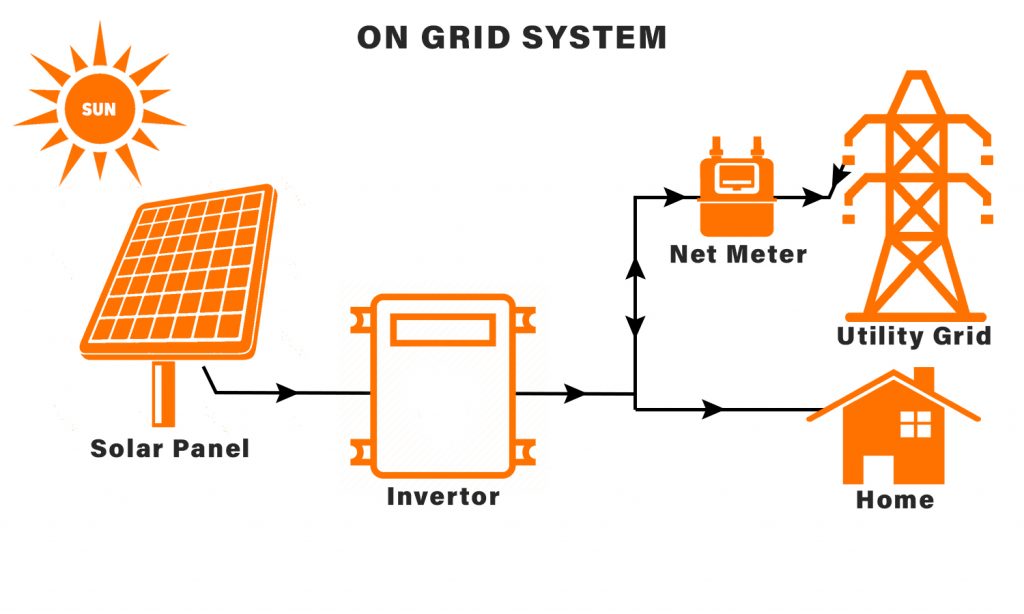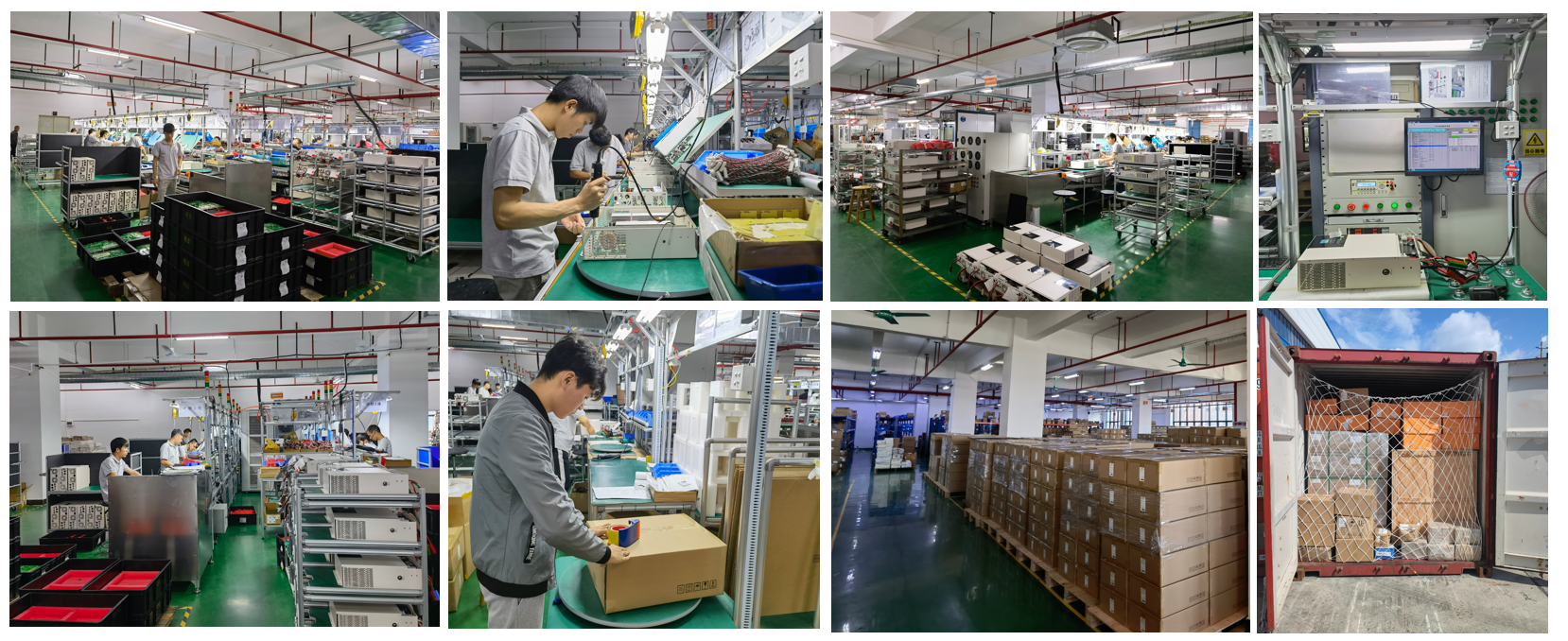Grid-tied Solar System
Grid-tied Solar System
A grid connected PV system is one where the photovoltaic panels or array are connected to the utility grid through a power inverter unit allowing them to operate in parallel with the electric utility grid.
An on-grid or grid-tied solar system is a system that works along with the grid. This means that any excess or deficiency of power can be fed to the grid through net metering. Many residential users are opting for an On-grid solar system as they get a chance to enjoy credit for the excess power their system produces and save on their electricity bills. You will always have power either from the solar system or from the grid. They do not have batteries.
Products details
On-grid or Grid-tied Solar System
A grid-tie solar system is the most cost-effective solar solution that allows the consumers to use the solar panel system with supplementation from the grid. The grid connection lets the system be used without any batteries, which makes it highly affordable and reliable. The on-grid system requires the following necessary components:
• Solar Panels
Solar panels are comprised of solar cells that convert sunlight into electricity, mono, poly or thin film solar panel which all fine
• On-grid Inverters
It is the second important component in a solar system. The solar inverter regulates the voltage and converts DC to AC voltage which can be later used to power household appliances, which also need connect city power
• Solar Mounting System
These are the framework equipment’s that are needed to install a solar panel. Mounting is to keep the panels tilted based on season, latitude and time of day to grab the maximum benefit of the solar energy.
• Net metering System
The surplus electricity produced by the on-grid system during the day is transmitted to the grid through the Net Metering System. This system takes account of the electricity units provided to the grid. The consumer gets credit units against the supplied, which he can use during Off-peak hours and can then reduce the bill even up to zero.
How It Works?

In an on-grid solar system, solar panels will continue to produce power during the day. This power can either be used instantly or exported to the grid with no backup for power outages. If at any time the system runs out of power, it draws the same from the electricity grid. Hence, a user will never run out of power in this case. Similarly, any excess that is produced by the system is fed to the grid. The advantage of an on-grid system is that the user will get a credit in his electricity bill for the extra power he sent to the grid. So, his electricity bills will also reduce. Always assess your Home's Energy Consumption, Solar Potential, Solar Electricity Needs, etc. before installing an on-grid solar system.
The light from the sun falls on the solar panels from where electricity is generated. This DC from the sun is converted into AC with the help of the inverter, which is then used by consumers in their homes or any commercial establishment. Till this stage operations of any solar system is the same. The main difference is beyond this point. After the electricity that is consumed by us, there can be two routes for the extra energy generated:
1. It can be either stored in batteries for use at a later part of the day (off-grid solar system)
2. Fed to the grid (on-grid solar system). Based on the feed-in-tariff rates (tariff fixed by the government, for purchase of the solar power generated from solar plants) in your area, your electricity bill is reduced for the amount of power that you have sold to the power grid.
Why Chose Optimum Sun
1. Have expert technicians who can design the best and economical for your home
2. We can offer you the whole solar goods which all have quality assurance to let solar system work longtime to support your home
3. We have many of happy on and off grid battery storage customers . When you ask us for a customer reference, we can provide someone with a similar stand alone solar system and battery storage to what we would recommend for your needs.4. We understand the responsibility of providing reliable power and being available to our clients 24/7 to troubleshoot and support.
Complete production line

Leave A Message
If you are interested in our products and want to know more details,please leave a message here,we will reply you as soon as we can.

 EN
EN
 JP
JP